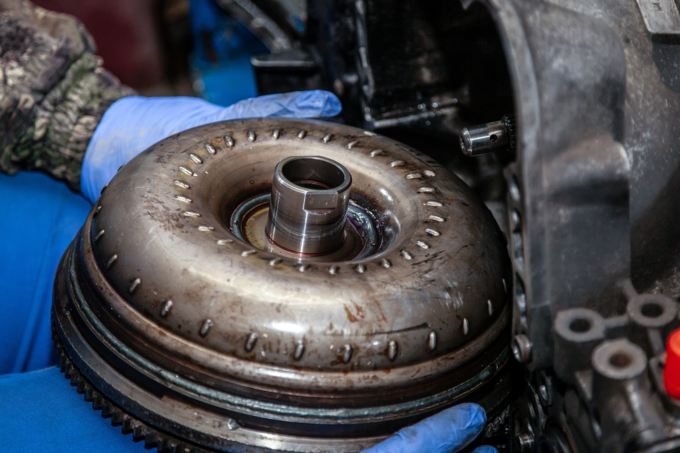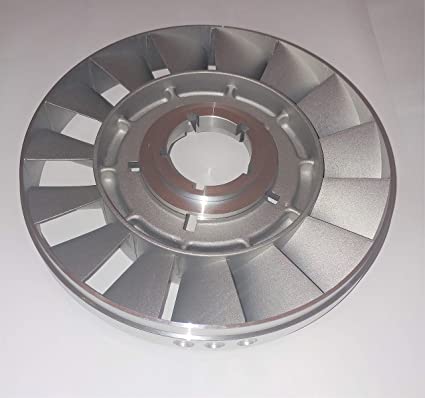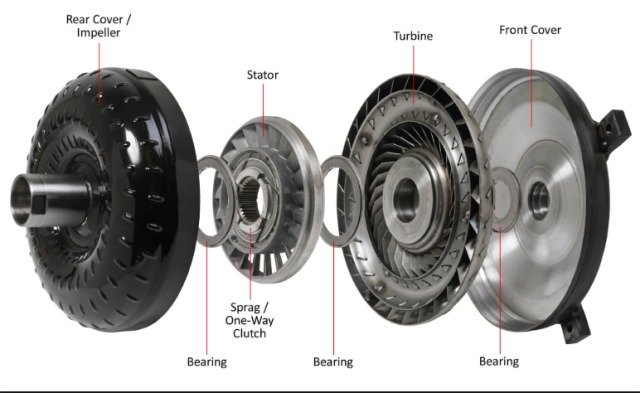If you are a frequent visitor to our website you may have seen that we have a couple of blogs on Automatic transmission but in both, we just glanced over Torque converters and didn’t quite explain how they work in-depth. Well, this changes now as this entire blog will explain how torque converter work.
Before we get into explaining how torque converters work a brief explanation of what torque itself means.
What actually is Torque?
Some of the petrolheads might be scoffing right now probably thinking what’s the point of explaining torque but we all have things we can learn. So torque, it is the rotational force that an engine can produce. That’s pretty much it. The more torque you have the more power in the wheels but the less speed you get. However, it doesn’t mean more torque equals slow car. The more torque you have the faster acceleration but lower speed overall. Take the case of driving a car uphill. You usually use lower gears because they have more torque and thus more power. They however don’t have high speeds.
A torque converter is not related to the torque of your engine it just uses the concept of torque which is the rotational force.
What are Torque Converters?

Simply put, they are the equivalent of a clutch in the manual transmission system but as you might have guessed they are not that simple. They work using many forces of physics and their working is quite honestly beautiful. They prevent the car from stalling when it is stopped similar to clutch in a manual transmission.
Let’s get right into the thick of things with the working of Torque converters starting with the parts involved.
Similar Read: Types of Automatic Transmission Systems Available In India Explained
Parts In A Torque Converter
The torque converter is an assembly of multiple parts and going straight to the working will make things complicated. To make the explanation more manageable we will divide the parts and learn their working individually then see how they work overall to become a fully functional torque converter.
Torque Converter Pump

The pump is connected to the casing of the torque converter which in turn is connected to the flywheel. It moves the fluid present inside the casing in a direction opposite to the direction of the casing rotation.
Turbine

The turbine powers the output shaft and is present in front of the pump closer to the flywheel. It rotates in an opposite direction to what the fluid is rotating as to absorb the torque and make the output shaft move.
Stator

Stator’s job is to ensure the fluid direction is correct after it comes out of the turbine. The correct direction, in this case, is the same as the direction of the pump.
Those were the three major parts that make the torque converter work. Let’s take a look at how they perform in tandem.
Popular Read: Hyundai Venue iMT Review | A Tryst with the Intelligent Manual Transmission
Working of a Torque Converter
A flywheel from the engine is connected to the casing of the torque converter. This makes the entire casing rotate at the same RPM as the engine. The pump is connected to the casing and thus rotate with the same rpm and direction. There is fluid present inside the casing which is thrown around by the pump using centrifugal force.
This fluid then goes towards the turbine which has small grates in it. These grates allow the fluid to go in and move the turbine. The turbine absorbs the torque and starts to rotate. The turbine is connected directly to the output shaft.

After the fluid comes out of the turbine it has almost no momentum left and is in the wrong direction of what the pump wants it to be. Hence the stator is used. It rotates the direction of the fluid and makes it similar to what the pump requires. This concludes the cycle which keeps on rotating to move the car.
With the working of the Torque Converter explained let’s move on to its advantages and disadvantages.
Advantages of a Torque Converter
Its Truly Automatic
If you are driving a car with a torque converter you don’t need to bother yourself with acting to start and stop the car. The torque converter does it all by itself thus making it truly automatic.
More Torque From Stop
While from a stationary position you hold brakes and acceleration at the same time the car with Torque converter generates more starting torque as the converter is working irrespective of the motion of the car. This also makes the car more smooth and provides its faster acceleration.
Download The GoMechanic App Now!
Disadvantage Of A Torque Converter
Excess Energy Wastage
Even with lockup mechanics at high speed, there is still a lot of fluid inside the torque converter which splashes around and causes excess energy use. It’s not entirely a problem but its still a disadvantage.
Read More: DCT vs CVT vs AMT | Choose The Best Transmission
That about covers the explanation of working of torque converters. They are an interesting piece of technology that has helped bridge the gap between a manual and automatic transmission and made car drives more of leisure than a chore.







Hi
Excellent article. Super quality pictures and clear explanations of a complex transmission part.
Well done. Very helpful and good insight article.
Thanks.
Thanks for the appreciation!
Excellent explanation
Reality your explain has been a great one to those who can understand